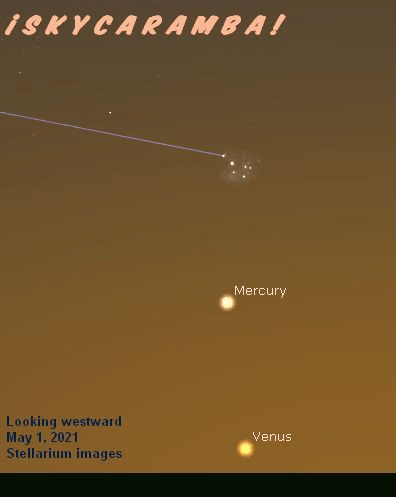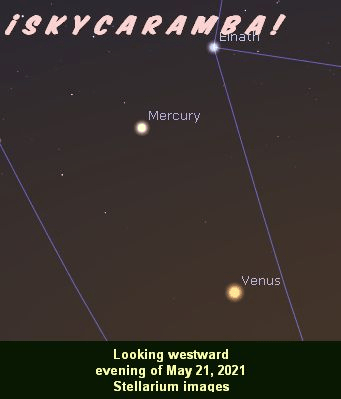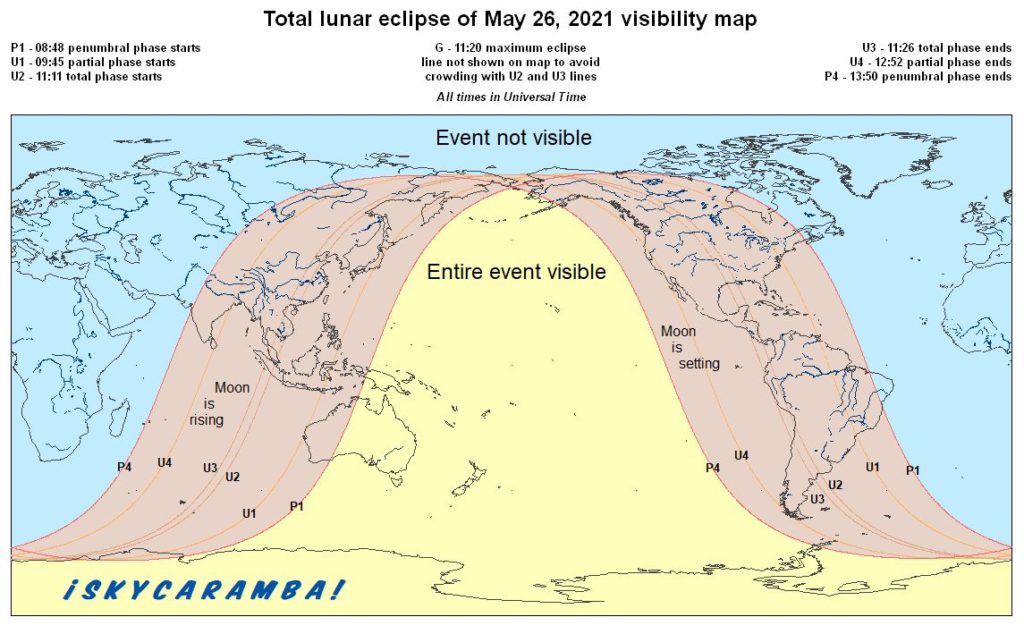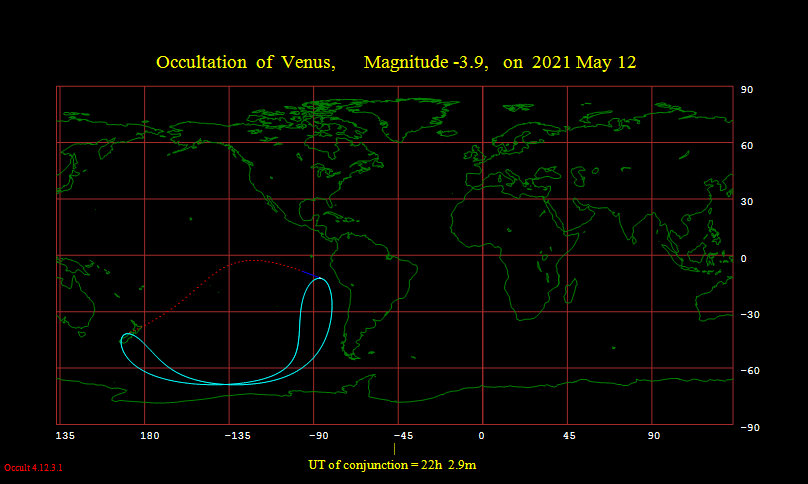Mercury and Venus are evening objects, Mars visits the twins, Saturn and Jupiter shine in the morning, and there’s a total lunar eclipse.



The month starts with Mercury and Venus in the evening sky. They reach higher into it each evening. The moon is in the neighborhood next to Venus on the 12th and Mercury on the 13th. If you have trouble identifying Mercury, the moon will be a good guide for you when it’s near. Mercury’s ingress into the night sky goes about as far as it will around the 17th. That’s when it’s at greatest elongation 22° east of the sun. As the planet holds still against the background of stars at the bottom of Auriga, Venus moves toward it. Spotting easily recognized Venus is another good way to spot the harder to identify Mercury. They are at their closest on the 28th. Venus is moving on toward the feet of Gemini at month’s end.

Mars was near Gemini’s feet at the start of the month. It moves to the twin Castor’s waistline nearest the star named Mebsuta on the 9th. It continues to Pollux’s waistline nearest Wasat on the 23rd. And at the end of May, Mars is exiting Gemini.

Saturn is a mid-morning riser in Capricornus. Jupiter is in Aquarius and rises a little later. Watch the moon go into last quarter phase as it passes near these planets on the 3rd, 4th, and 5th. Neither planet moves much against the stars this month. But they become easier to see as they rise earlier each morning. The moon passes by Saturn again on the 31st.
The moon is at southern lunistice on the 1st, goes north of the equator on the 8th, is farthest north on the 15th, goes south of the equator again on the 22nd, and is farthest south again on the 28th. At each lunistice, it’s 25.6° from the equator.
Last quarter is on the 3rd, new moon is on the 11th, first quarter is on the 19th, and the moon is full on the 26th.
Lunar apogee is on the 11th at 406,500 kilometers. Perigee is on the 26th at 357,200 kilometers.

The best lunar event this month is the total eclipse on the 26th. For most of the Americas, the moon will be setting as the moon enters Earth’s shadow. Most of the Pacific gets to see the entire eclipse. So do New Zealand, eastern Australia, and most of the island of New Guinea. For eastern Asia, it’s a moonrise event as the moon leaves Earth’s shadow. Partial phase starts at 09:45 UT. Total phase is from 11:11 to 11:26. Partial phase ends at 12:52. So that’s only 15 minutes of totality. The moon could have a reddish brown, orange-brown, or just plain brown look. Some people have reported seeing other colors like green or blue during total lunar eclipses, but no one’s sure why and those reports are rare. The red and orange colors come from sunlight going through Earth’s atmosphere before it reaches the moon. It’s the color of sunset and sunrise refracting through. So no, the moon’s not in total darkness during a total eclipse.

Notable conjunctions this month:
3rd – Saturn and the moon 4.0° 5th – Jupiter and the moon 4.3°
6th – Neptune and the moon 4.0° 10th – Uranus and the moon 2.2°
12th – Venus and the moon 0.7° 13th – Moon and Aldebaran 5.4°
13th – Mercury and the moon 2.1° 16th – Mars and the moon 1.5°
17th – Moon and Pollux 3.1° 19th – Moon and Regulus 4.7°
26th – Moon and Antares 4.6° 29th – Mercury and Venus 0.4°
31st – Saturn and the moon 4.0°
